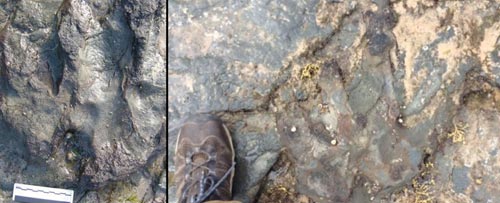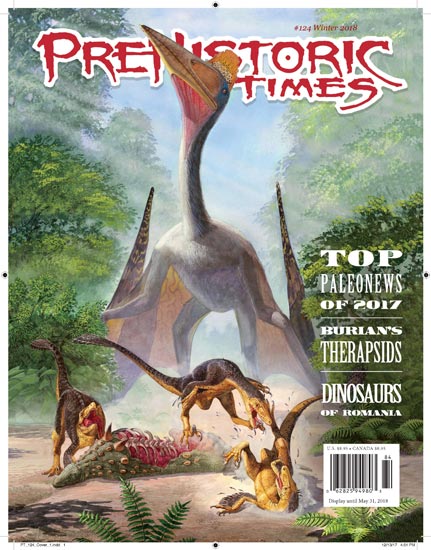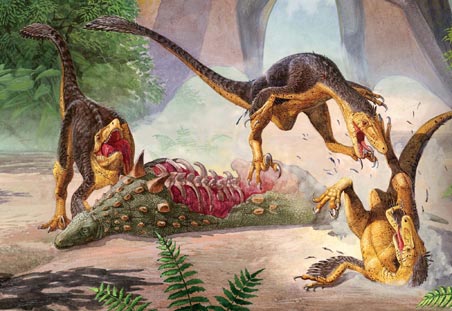Rare Australian Dinosaur Footprint Vandalised
Australian Dinosaur Footprint Deliberately Damaged
A three-toed dinosaur footprint that was created around 115 million years ago has been deliberately attacked and damaged by vandals. The track, which dates from the Early Cretaceous, was discovered in 2006 in the Bunurong Marine Park in the Australian state of Victoria. It is not known when the print was attacked, it was found damaged by members of a school tour party last week. A spokesperson for the Marine Park stated that the track seems to have been damaged by blows from a hammer, this was not an accident but an individual or individuals chose to smash the toe prints.
The Fossil Dinosaur Footprint (left undamaged and right damaged)

Picture credit: Parks Victoria
The picture on the left shows the undamaged footprint, whilst the right half of the image shows the vandalised track, note the left boot used to show scale.
Damaged Dinosaur Footprint
Fragments from the footprint have been found in the area, palaeontologists from Museums Victoria might be able to restore the print to some degree, but the repaired print will not be the same as the original.
A spokesperson from UK-based Everything Dinosaur commented:
“This is very sad news. When the footprint was found, it could have been removed to a museum for safe-keeping and study, but it was decided to leave the track in place so that everybody could enjoy it. We hope the authorities are able to apprehend the culprits.”
Parks Victoria have appealed for witnesses and requested assistance in the tracking down of the vandals responsible.



